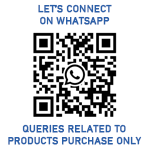Water treatment systems play a crucial role in ensuring the purity and efficiency of our water supply. To enhance their performance, the integration of pressure gauges becomes essential. In this comprehensive guide, we will unravel the intricacies of pressure gauges, exploring their types, functionalities, calibration processes, reading methods, and proper installation techniques.
Must Buy: https://www.natronequipments.com/soft-drink-industry/soft-drink-pressure-regulators-hoses/soft-drink-regulators-spare-parts/regulator-pressure-gauge-0100-psi-guage-14-nssp000011.html
Understanding Pressure Gauges: How They Work?
Pressure gauges serve as indispensable devices for measuring the pressure within a system. Whether it’s water systems or storage tanks, the effective functioning of these systems relies on the pressure exerted on water and air. By utilizing a pressure gauge, users can identify errors in their systems by gauging the force of the pressure. Any significant deviation from the normal pressure indicates potential issues that require prompt attention.
For any Doubt or Query pls write us at: Sales3@natronequipments.com
Calibrating Pressure Gauges: When and How?
The calibration of pressure gauges is a crucial aspect, and its necessity depends on the type of gauge and its application. In water treatment applications demanding precise pressure control, accurate calibration is paramount. Calibration tools, such as pressure hand pumps, are employed for this purpose.
In the calibration process, precision is key to ensuring accurate pressure readings. Here’s a detailed breakdown:
- Connection to Calibrator: Initiate the process by connecting the pressure gauge to a specialized tool known as a calibrator.
- Setting the Pressure: Adjust the calibrator to the specific pressure level deemed necessary for the application or industry standards.
- Pumping for Calibration: Engage in the calibration by using a pump mechanism within the calibrator, steadily increasing pressure until the predetermined level is attained.
- Observing Gauge Reading: Simultaneously, keep a close eye on the pressure gauge’s reading during this calibration phase.
- Calibration Adjustment: After reaching the set pressure, assess the gauge reading against the expected value. If disparities exist, proceed to fine-tune or adjust the calibration settings.
This meticulous process ensures that the pressure gauge aligns accurately with the intended pressure parameters. Regular calibration is imperative for reliable and precise performance, particularly in applications where precise pressure control is essential, such as water treatment systems.
Must But: https://www.natronequipments.com/soft-drink-industry/soft-drink-pressure-regulators-hoses/soft-drink-regulators-spare-parts/regulator-pressure-gauge-0160-psi-nssp002461.html
Reading Pressure Gauges: Deciphering the Numbers
Understanding how to read a pressure gauge is fundamental. For analog gauges, users match the needle position to the numbers on the dial. Digital pressure gauges provide exact PSI readings, while air pressure gauges, like those for tires, use a stick marked with PSI measurements. Proper calibration ensures accurate readings, helping users maintain optimal pressure levels for their applications.
Installation of Pressure Gauges: A Step-by-Step Guide
Installing pressure gauges is a simple process that can be effectively executed by following these step-by-step points:
Threaded Mounts: Pressure gauges usually come equipped with threaded mounts designed for installation in pipe fittings or manifolds.
Thread Placement Consideration: Understand the position of the threads on the gauge. Depending on the model, threads may be located at the very bottom or on the back.
Bottom Thread Placement: If the threads are at the bottom, consider mounting the gauge at the top of a filter housing or a similar plumbing installation.
Back Thread Placement: For gauges with threads on the back, plan to mount them on a panel or a system that is easily visible and accessible to the user.
By paying attention to the location of the threads and selecting an appropriate mounting position, the installation of pressure gauges becomes a straightforward process, ensuring accurate and reliable readings for effective monitoring.
Conclusion: Elevating Water Treatment Precision
In the realm of water treatment systems, pressure gauges emerge as silent sentinels, monitoring and ensuring the efficiency of the entire process. From understanding their basic functionalities to mastering calibration and installation, this guide equips users with the knowledge needed to make informed decisions. Embrace the precision of pressure gauges to elevate the performance of your water treatment systems.







